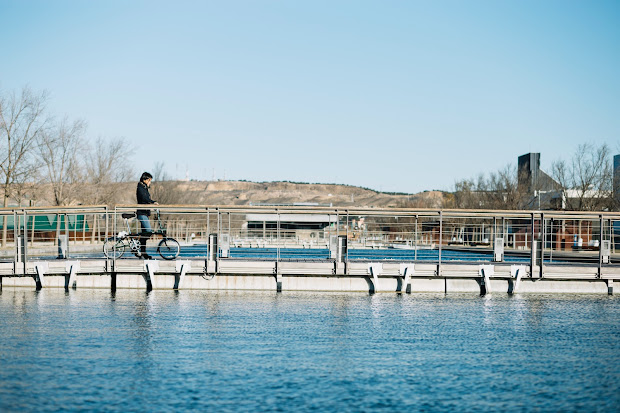Understanding the IP Rating, Cleaning Process, Installation, and Commissioning of Equipment
In
the world of electrical and mechanical engineering, ensuring the proper
functioning of equipment is vital to maintaining performance, safety, and longevity.
One of the fundamental components of this process is understanding the IP
rating (Ingress Protection rating), implementing an effective cleaning process,
and following precise installation and commissioning procedures. These factors
help guarantee that your equipment operates smoothly and is safeguarded against
external environmental factors.
IP
Rating: Protection for Equipment
The
IP rating (Ingress Protection rating) is a crucial standard for classifying the
degree of protection offered by an enclosure against the ingress of foreign
objects, dust, and water. IP ratings are typically followed by two digits; the
first digit refers to protection against solid objects (such as dust or
particles), and the second digit refers to protection against liquids (such as
water). For instance, an IP65 rating means the equipment is dust-tight and
protected against water jets, making it suitable for outdoor or harsh
environments.
It’s
essential to understand the equipment's IP rating when choosing machinery for
specific environments. For instance, outdoor machinery, such as pumps and
motors exposed to rain or dust, must have a high IP rating (like IP66 or
higher), while indoor office equipment can function effectively with a lower
rating.
The
Cleaning Process: Keeping Equipment in Top Condition
Cleaning
plays a vital role in maintaining the efficiency and lifespan of equipment.
Over time, dirt, dust, and other contaminants can accumulate on machinery,
leading to wear and tear or malfunctions. Proper cleaning, however, prevents
such issues and ensures smooth operations.
Here
are some steps in an effective cleaning process:
Turn
Off Power: Always ensure the equipment is
powered off before cleaning to prevent electrical hazards.
Remove
External Debris: Gently remove
any large debris or dust buildup using a dry cloth, brush, or compressed air.
This will avoid scratching or damaging the equipment.
Clean
the Surface: Depending on the
type of equipment, you may need to use a specialized cleaner or mild detergent
and water to wipe surfaces. Avoid harsh chemicals that could damage sensitive
components.
Check
for Internal Contaminants: For
machinery with vents or internal parts, use air or vacuum systems to clear out
dust or debris that might obstruct airflow or cause overheating.
Lubricate: Some equipment requires regular lubrication
of moving parts to ensure smooth operation. Always use the
manufacturer-recommended lubricant.
Following
the proper cleaning process ensures the machine remains in optimal working
condition and is protected from unnecessary wear or damage due to contaminants.
Installation:
Setting Up Equipment for Success
Proper
installation is one of the most critical steps in ensuring that equipment works
safely and efficiently. Here are key considerations when installing
machinery:
Read
Manufacturer’s Guidelines: Always
follow the manufacturer’s installation instructions, as they will contain
specific requirements for your equipment, such as space, wiring, or ventilation
needs.
Prepare
the Site: Ensure that the installation site is
suitable for the equipment. This involves checking things like the
environmental conditions (e.g., temperature, humidity), available space, and
ensuring the site is clear of any obstructions.
Ensure
Correct Connections: When wiring the
equipment, make sure connections are secure and meet the voltage and amperage
requirements. For machinery that requires plumbing, ensure pipes and hoses are
correctly fitted and leak-free.
Level
the Equipment: Many machines,
particularly heavy ones, need to be placed on a level surface to avoid
unnecessary strain or malfunctioning.
Taking
the time to install equipment carefully not only minimizes the risk of failure
but also enhances its overall lifespan and effectiveness.
Commissioning:
Bringing Equipment Online
Once
installation is complete, commissioning begins. This step involves testing the
equipment to ensure that it functions correctly before full operation.
Commissioning is a process that allows technicians to identify any potential
problems, fine-tune settings, and calibrate machinery for optimal performance.
The
commissioning process generally includes:
Verification
of Setup: Double-check that the equipment is
correctly installed, with all connections, wiring, and plumbing in place.
Functional
Testing: Start the equipment and run several
tests to ensure it works according to the desired specifications. This may
include checking motor speed, temperature, pressure, or any other operational
parameters.
Performance
Calibration: Fine-tune the
equipment settings to ensure maximum efficiency. This could involve adjusting
flow rates, speeds, or other relevant variables.
Final
Inspection: Before declaring
the equipment fully operational, carry out a final inspection to ensure it
meets all safety and operational standards.
Following
a comprehensive commissioning process allows the team to identify issues before
full production starts, ensuring safety, reducing downtime, and guaranteeing
performance.
Conclusion
In
summary, understanding the importance of an IP rating, maintaining an effective
cleaning process, and following proper installation and commissioning protocols
are fundamental to ensuring equipment performs optimally and safely. By
properly evaluating each stage of these procedures, businesses can prevent
costly repairs, extend the life of their machinery, and enhance operational
efficiency. Whether you’re installing a new system or maintaining an existing
one, paying attention to these aspects guarantees that your equipment will be
ready to meet the challenges of any environment.
Written by
Pranita Sardesai, Sales Executive
To Know more about services, you can visit our website: Water and Wastewater Treatment
Or contact us on email: support@agileventures.in or call us on +91-97650-10082



Comments
Post a Comment